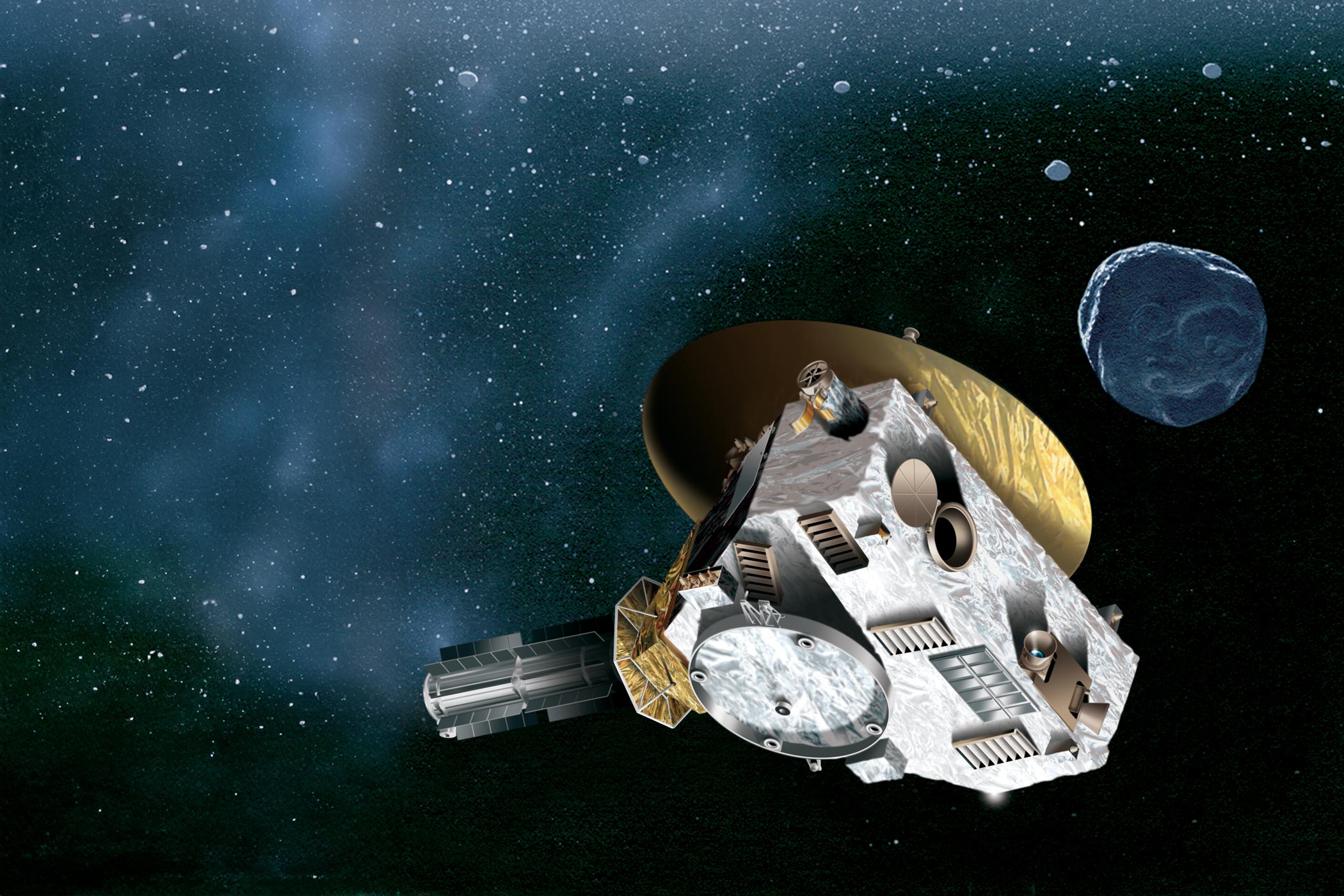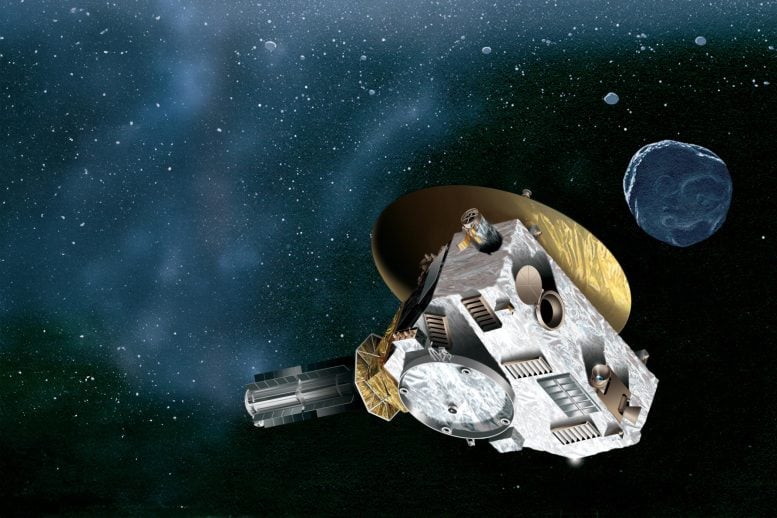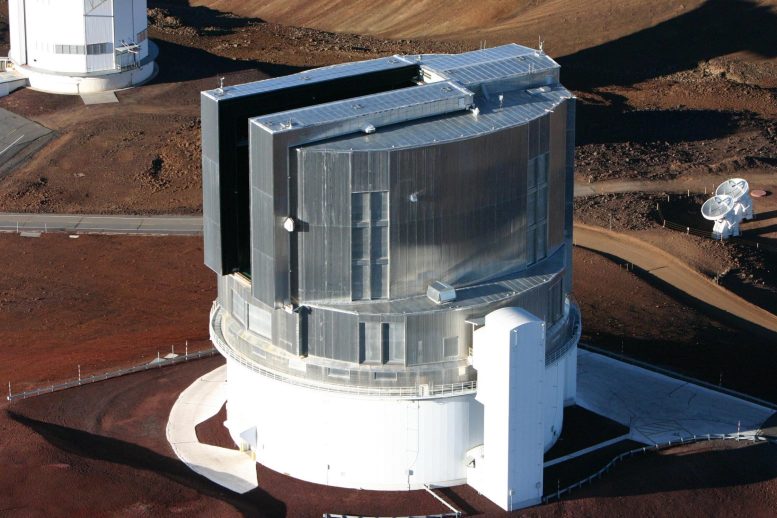

NASA’s New Horizons team has identified a new group of distant Kuiper Belt objects using the Subaru Telescope, revealing that our solar system’s outskirts may be larger and more complex than previously understood.
This discovery suggests the presence of a potential second Kuiper Belt and challenges existing models of solar system formation, with implications for our understanding of other planetary systems.
Discovery of New Kuiper Belt Objects
A new, peer-reviewed study authored by NASA’s New Horizons Kuiper Belt search team reports the detection of an unexpected population of very distant bodies in the Kuiper Belt, an outer region of our solar system populated by ancient remnants of planetary building blocks lying beyond the orbit of Neptune. The study used data collected with the 8.2-meter diameter Japanese Subaru Telescope in Hawaii. New Horizons is the NASA’s spacecraft sent to explore the Pluto system and the Kuiper Belt.
The newly detected Kuiper Belt objects reported in the study, to be published this month in the Planetary Science Journal of the American Astronomical Society, stretch out to almost 90 times as far from the Sun as Earth.

Implications of Extended Kuiper Belt
The new result has multiple implications. One is that the Kuiper Belt may extend farther than formerly believed, or that there is a second Kuiper Belt beyond the one observationally discovered in the 1990s. A second implication is that the New Horizons spacecraft, now about 60 times as far from the Sun as Earth, is not past the Kuiper Belt as earlier expected.
“Our Solar System’s Kuiper Belt long appeared to be very small in comparison with many other planetary systems, but our results suggest that idea might just have arisen due to an observational bias,” said Wes Fraser, of the National Research Council of Canada, a co-investigator on the New Horizons mission science team and the study’s lead author. “Our Subaru observations searched down to fainter detection limits and found a significant Kuiper Belt mass at 70 to 90 times as far from the Sun as Earth. So maybe, if this result is confirmed, our Kuiper Belt isn’t all that small and unusual after all compared to those around other stars.”
Speculations on Solar System Formation
One possibility is that this new population of Kuiper Belt objects could be a dynamically resonant population with Neptune, gravitationally affecting these Kuiper Belt Objects in just the right way to cause their orbital period to be a precise multiple of Neptune’s orbital period. Alternatively, this new population of Kuiper Belt objects may challenge some aspects of current models of the Solar System’s formation, suggesting that the disk of planetary material from which the solar system formed was much larger than previously thought.
“We still have much to learn about what this distant population actually looks like, but what’s fascinating is that there is a new Kuiper Belt population out there at all,” Fraser continued.
For more on this discovery:
Reference: “Candidate Distant Trans-Neptunian Objects Detected by the New Horizons Subaru TNO Survey” by Wesley C. Fraser, Simon B. Porter, Lowell Peltier, JJ Kavelaars, Anne J. Verbiscer, Marc W. Buie, S. Alan Stern, John R. Spencer, Susan D. Benecchi, Tsuyoshi Terai, Takashi Ito, Fumi Yoshida, David W. Gerdes, Kevin J. Napier, Hsing Wen Lin, Stephen D. J. Gwyn, Hayden Smotherman, Sebastien Fabbro, Kelsi N. Singer, Amanda M. Alexander, Ko Arimatsu, Maria E. Banks, Veronica J. Bray, Mohamed Ramy El-Maarry, Chelsea L. Ferrell, Tetsuharu Fuse, Florian Glass, Timothy R. Holt, Peng Hong, Ryo Ishimaru, Perianne E. Johnson, Tod R. Lauer, Rodrigo Leiva, Patryk S. Lykawka, Raphael Marschall, Jorge I. Núñez, Marc Postman, Eric Quirico, Alyssa R. Rhoden, Anna M. Simpson, Paul Schenk, Michael F. Skrutskie, Andrew J. Steffl and Henry Throop, Accepted, Planetary Science Journal.
arXiv:2407.21142
Co-author and New Horizons Principal Investigator Alan Stern, of the Southwest Research Institute, based in San Antonio, Texas, added, “This is a groundbreaking discovery revealing something unexpected, new, and exciting in the distant reaches of the solar system; this discovery probably would not have been possible without the world class capabilities of Subaru Telescope. We look forward to finding objects in this new population for New Horizons to observe, either at close or at far range.”
This work was supported by NASA’s New Horizons mission and NASA Keck PI Data Awards, administered by the NASA Exoplanet Science Institute. Data were obtained at the Subaru Telescope from telescope time allocated to NASA through the agency’s scientific partnership with the California Institute of Technology and the University of California. The Johns Hopkins Applied Physics Laboratory in Laurel, Maryland, designed, built, and operates the New Horizons spacecraft and manages the mission for NASA’s Science Mission Directorate and the mission’s Principal Investigator. The Southwest Research Institute (SwRI), based in San Antonio, Texas, directs the mission via SwRI’s Principal Investigator Alan Stern, who leads the mission for NASA. NASA Marshall Space Flight Center’s Planetary Management Office in Huntsville, Alabama provides NASA oversight for New Horizons.